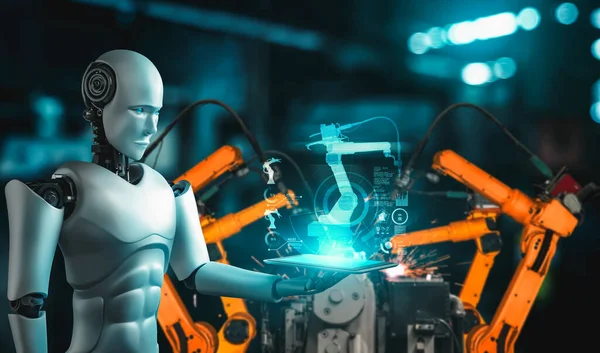Automation Is Called “Productivity Growth”

It is more than a bit bizarre reading pieces that talk about automation or job-killing AI as something new and alien. These are forms of productivity growth. They allow more goods and services to be produced for each hour of human labor.
Productivity growth is usually thought of as a good thing. It’s the reason that we don’t have half the U.S. workforce employed in agriculture growing our food. Instead, it is around 1.0 percent of the U.S. workforce, and we grow enough to be huge food exporters.
Productivity growth allows for workers to have higher wages. The period in our history where we had the most rapid productivity growth was in the post-war boom from 1947 to 1973. Productivity growth averaged almost 3.0 percent a year. This was passed on in the form of higher real wages and improved benefits.
There is no guarantee that the benefits of productivity growth will be passed on to workers or shared evenly among workers. From 1980 to 2010, the bulk of the gains from higher productivity went to workers at the top end of the wage distribution (e.g. CEOs, Wall Street types, and doctors and dentists). The wages for workers at the middle and bottom barely kept pace with inflation.
In the last two decades there has been a shift from wages to profits. Workers at the middle and bottom have been seeing real wage gains over this period, but they have not kept pace with productivity growth.
Whether or not workers share in the gains from productivity growth depends on how we choose to structure the economy. If we run a high employment economy, as is now the case, workers are well-positioned to secure wage gains in line with productivity growth.
Also, strong unions make workers better positioned to secure wage gains. The strength of unions depends both on their organizing, but also the institutional structure. If employers are free to harass or fire workers trying to organize, unions will be weaker. The laws on what sort of strikes are allowed also affect workers’ power. For example, laws in the United States that prohibit one union from supporting another union’s strike (e.g. Teamsters refusing to deliver supplies to a hotel where the workers are striking) weaken workers’ power.
Other rules also indirectly have a large effect on distribution, such as the strong patent and copyright monopolies that the U.S. government hands out. Bankruptcy laws that make it easy for corporations or private equity companies to avoid debt, including pension liabilities to workers, also affect distribution.
Anyhow, this is a big topic (see Rigged, it’s free), but the idea that productivity growth would ever be the enemy is a bizarre one. Automation and other technologies with labor displacing potential are hardly new and there is zero reason for workers as a group to fear them, even though they may put specific jobs at risk.
The key issue is to structure the market to ensure that the benefits are broadly shared. We never have to worry about running out of jobs. We can always have people work shorter hours or just have the government send out checks to increase demand. It is unfortunate that many have sought to cultivate this phony fear.
More By This Author:
The Economy After The GDP Revisions
China’s Growth More than Double U.S. Growth Under Trump
In the Battle Against Inflation, We Have Already Gone the Last Mile




Using screenshot monitoring effectively requires a balance between employee oversight and fostering a positive work environment. DeskTrack’s screenshot monitoring feature allows businesses to enhance productivity by providing real-time snapshots of employee activities. However, to ensure it’s a productive tool, it’s important to implement it transparently, with clear communication to employees about how and why it’s being used. Best practices include setting up screenshot intervals that capture meaningful data without being intrusive and regularly reviewing screenshots to offer constructive feedback. DeskTrack enables managers to focus on work quality.